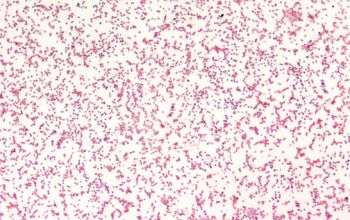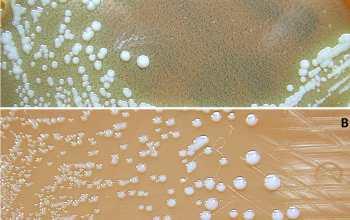Francisella tularensis
-
General information
Is an intracellular bacteria, which includes mycobacteria, Listeria, Legionella, Brucella, Coxiella and Rickettsia
F. tularensis is a potential BIOTERRORIST agent
F.tularensis subsp tularensis (type A) is one of the most infectious pathogen known in human medicine.
The infective dose in humans is extremely low: 25 bacteria in an aerosol.
Taxonomy
Family: Francisellaceae
F. tularensis subsp tularensis (type A) → virulent
F. tularensis subsp holartica (type B) → less virulent
F. tularensis subsp mediasiatica → moderate virulence
F. tularensis subsp novicida → low virulence
F. philomiraghia
Tularemia is a bacterial zoonotic disease of the northern hemisphere.
F.tularensis is highly virulent for humans and a range of animals such as rodents, hares and rabbits. It is transmitted to humans by arthropod bites, contact with infected animals, ingestion of contaminated water or food and inhalation infected aerosols.
There is no human to human transmission.
Clinical significance
F. tularensis subsp tularensis, can cause serious cinical manifestation and significant mortality if untreated. High fever is accompanied by progressive weakness, malaise, anorexia and loss of weight. Respiratory symptoms, including a dry cough, a sore throat and substernal pain may occur whether or not the disease is acquired by inhalation. Gastrointestinal symptoms such as nausea, vomiting and diarrhoea.
-
Diseases
-
Gram stain
They are also facultative intracellular parasites of macrophages.
Very tiny, faintly staining, pleomorphic, Gram-negative short rods or coccoid forms, rarely chained.
Cell size (µm) 0.2-0.7 x 0.2
-
Culture characteristics
-
BIOSAFETY CONDITIONS
Obligate aerobic
They are fastidious due to its requirement of cysteine for enhanced growth.
except: F.tularensis subsp novicida
For contaminated specimens, antibiotic-supplemented media are recommended.
CHOC, BCYE (buffered charcoal yeast extract)
After 48 h or more, colonies are 1-2mm, white to grey to bluish-grey, opaque, flat, with an entire edge, smooth and have a shiny surface.
Subculture on BCYE/CHAB
CHAB (cystine heart agar with 9% chocolatized blood)
After 24-48 h colonies are greenish-white, dense with a butyrous consistency.
A characteristic opalescent sheen is evident on the surface of the colonies, especially if the plate has been incubated for 48-72 h.
-
-
Characteristics
-
References
James Versalovic et al.(2011) Manual of Clinical Microbiology 10th Edition
Karen C. Carrol et al (2019) Manual of Clinical Microbiology, 12th Edition
CDC


